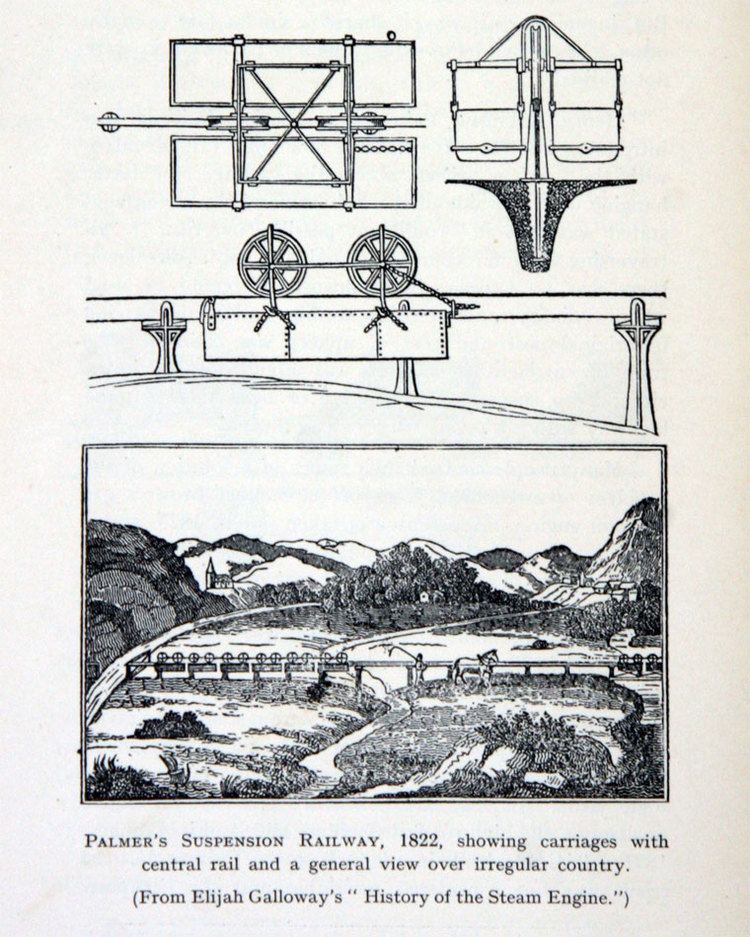Name Henry Palmer | ||
 | ||
Died 1844, Westminster, United Kingdom Similar People Mark Whitby, Robert Stephenson, Thomas Telford, William Cubitt, John Wolfe Barry | ||
Henry Robinson Palmer (1795–1844) was a British civil engineer who designed the world's second monorail and the first elevated railway.
Contents

Early life
A son of Samuel Palmer and his wife Elizabeth Walker, he was born in Hackney. He served a five-year apprenticeship with Bryan Donkin, from 1811. He was then taken on by Thomas Telford, for whom he worked for a decade. He was one of the young engineers who founded the Institution of Civil Engineers in 1818.
Monorails
Palmer made a patent application in 1821 for an elevated single rail supported on a series of pillars in an ordinary distance of ten feet, inserted into conical apertures in the ground, with carriages suspended on both sides, hanging on two wheels the one placed before the other. A horse is connected to the carriage with a towing rope, proceeding on one side of the rail on a towing path.
There was an earlier monorail in Russia, of which Palmer was unaware. By 1823 George Smart had set up a trial version of Palmer's monorail.
Palmer wrote in the study presenting his system: "the charge of carrying the raw material to the manufacturing district, and the manufactured article to the market, forming no small proportion of its price to the consumer.[...] The leading problem in our present subject is, to convey any given quantity of weight between two points at the least possible expense.[...] In order to retain a perfectly smooth and hard surface, unencumbered with extraneous obstacles to which the rails near the ground are exposed, it appeared desirable to elevate the surface from the reach of those obstacles and at the same time be released from the impediments occasioned by snows in the winter season."
The first horse-powered elevated monorail started operating at Cheshunt on 25 June 1825. Although designed to transport materials, it was here used to carry passengers. In 1826 German railway pioneer Friedrich Harkort had a demonstration track of Palmer's system built by his steel factory in Elberfeld, one of the main towns in the early industrialised region of the Wupper Valley. Palmer's monorail can be regarded as the precursor of the Schwebebahn Wuppertal and of the Lartigue Monorail.
In his study, Palmer describes as one of the first the principle of containerisation: "The arrangement also enables us to continue a conveyance by other means with very little interruption, as it is evident that the receptacles may be received from the one, and lodged on to another kind of carriage or vessel separately from the wheels and frame work, without displacing the goods".
